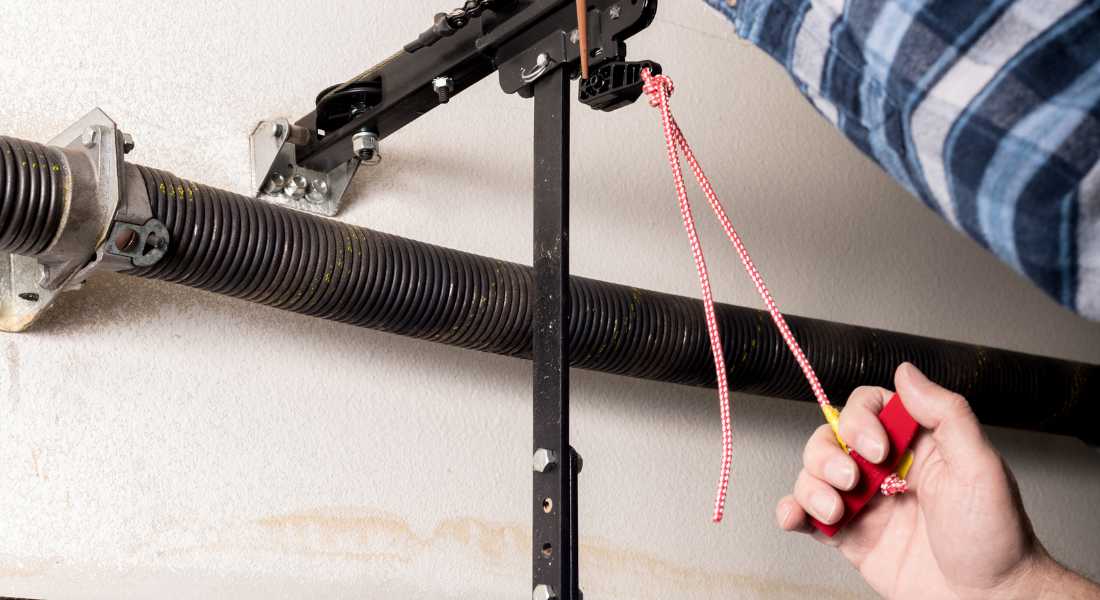Garage door springs are essential components that bear the weight of your garage door and enable it to open and close smoothly. Over time, these springs can wear out due to constant usage, leading to various issues and potentially expensive repairs. By understanding how to extend the lifespan of your garage door springs, you can ensure the optimal functioning of your garage door while minimizing the risk of unexpected breakdowns.
Understanding Garage Door Springs
To effectively maintain and extend the lifespan of your garage door springs, it’s important to have a basic understanding of how they work. There are two main types of springs used in garage doors: torsion springs and extension springs. Torsion springs are located above the door, while extension springs are placed on either side of the door tracks. Both types store and release energy to counterbalance the weight of the door, allowing it to move smoothly.
Signs of Worn-Out Springs
Before diving into maintenance techniques, it’s crucial to recognize the signs of worn-out garage door springs. These signs include:
- Unusual noises: If you notice loud creaking, popping, or snapping sounds when operating your garage door, it may indicate worn-out springs.
- Imbalanced door: An unbalanced door that doesn’t stay in place or slams shut abruptly is a sign of spring issues.
- Slow operation: If your garage door opens or closes significantly slower than usual, it may be due to worn-out springs.
- Gaps or misalignment: Noticeable gaps between the springs or misalignment of the door are indicators of spring problems.
- Visible wear and tear: Check for rust, corrosion, or any signs of wear on the springs themselves.
Importance of Extending Lifespan
Extending the lifespan of your garage door springs is not only cost-effective but also crucial for your safety. When springs become worn or break, the door may become unstable, posing a risk of accidents or property damage. Moreover, regular maintenance and care can save you from unexpected garage door malfunctions, ensuring convenience and security for you and your family.
Regular Maintenance Tips
To extend the lifespan of your garage door springs and prevent premature failure, follow these maintenance tips:
Lubrication and Cleaning
Regular lubrication of the springs, hinges, and other moving parts is essential to reduce friction and wear. Use a high-quality silicone or lithium-based lubricant and apply it sparingly to the springs. Additionally, keep the tracks clean from debris or obstructions.
Balance and Tension Adjustment
Maintaining proper balance and tension is crucial for the longevity of your springs. Perform periodic balance tests by disconnecting the opener and manually opening the door halfway. If it stays in place, the balance is correct. If not, consult a professional for adjustment.
Inspecting for Wear and Tear
Regularly inspect your garage door springs for any signs of wear, corrosion, or damage. Look for gaps between the coils, rust, or any visible deformation. If you notice any issues, it’s advisable to address them promptly.
Safety Precautions
When performing maintenance tasks, always prioritize safety. Disconnect the power to the opener before working on the springs and use proper safety equipment such as gloves and safety glasses. If you are unsure or uncomfortable with any task, it’s best to seek professional assistance.
Hiring Professional Help
While some maintenance tasks can be done independently, it’s important to acknowledge your limitations. Complex tasks like spring replacement or major adjustments should be handled by trained professionals to avoid accidents or further damage to your door.
Common DIY Mistakes to Avoid
When attempting DIY garage door maintenance, it’s crucial to avoid common mistakes that can compromise the lifespan of your springs:
- Using improper lubricants: Avoid using grease or oil-based lubricants, as they can attract dirt and cause buildup.
- Over-tightening or loosening springs: Incorrect tension adjustment can lead to premature wear or a dysfunctional door.
- Ignoring warning signs: Neglecting signs of worn-out springs or other issues can result in more extensive damage and costly repairs.
- Skipping regular maintenance: Regular maintenance is key to preventing issues and extending the lifespan of your garage door springs. Don’t overlook it.
Spring Replacement: When is it Necessary?
Despite regular maintenance efforts, there may come a time when spring replacement becomes necessary. Some situations that may require spring replacement include:
- Broken springs: If a spring breaks or snaps, it should be replaced immediately.
- Uneven wear: If one spring shows significantly more wear than the other, both springs should be replaced to maintain balance.
- Excessive rust or corrosion: Springs heavily affected by rust or corrosion should be replaced to prevent failure.
- Extended usage: Springs that have surpassed their typical lifespan, usually around 10,000 cycles, should be replaced preventively.
Choosing the Right Springs
When it’s time for spring replacement, choosing the right type and size of springs is crucial. Factors to consider include the weight and size of your garage door, the type of springs (torsion or extension) required, and the specific specifications recommended by the manufacturer. Consulting with a professional or reputable garage door supplier can help ensure you select the appropriate springs.
Proper maintenance and care are essential to extend the lifespan of your garage door springs. By understanding the signs of wear, performing regular maintenance tasks, and knowing when to seek professional help, you can keep your garage door operating smoothly and safely for years to come.
FAQs
- How often should I lubricate my garage door springs?
- It’s recommended to lubricate your garage door springs every six months or as needed, depending on usage and environmental conditions.
- Can I adjust the tension of my garage door springs myself?
- Adjusting the tension of garage door springs can be dangerous and should be left to trained professionals who have the necessary tools and expertise.
- Is it possible to repair a broken garage door spring?
- No, broken garage door springs cannot be repaired. They must be replaced to ensure the proper functioning of your garage door.
- What is the average lifespan of garage door springs?
- On average, garage door springs have a lifespan of around 10,000 cycles. However, this can vary depending on usage and maintenance.
- Are there any safety precautions I should take when working on my garage door springs?
- Yes, always disconnect the power to the opener and use proper safety equipment when working on garage door springs to minimize the risk of accidents or injuries.
Sumber : EU303
Sumber : Slot Online
Sumber : Slot Online

